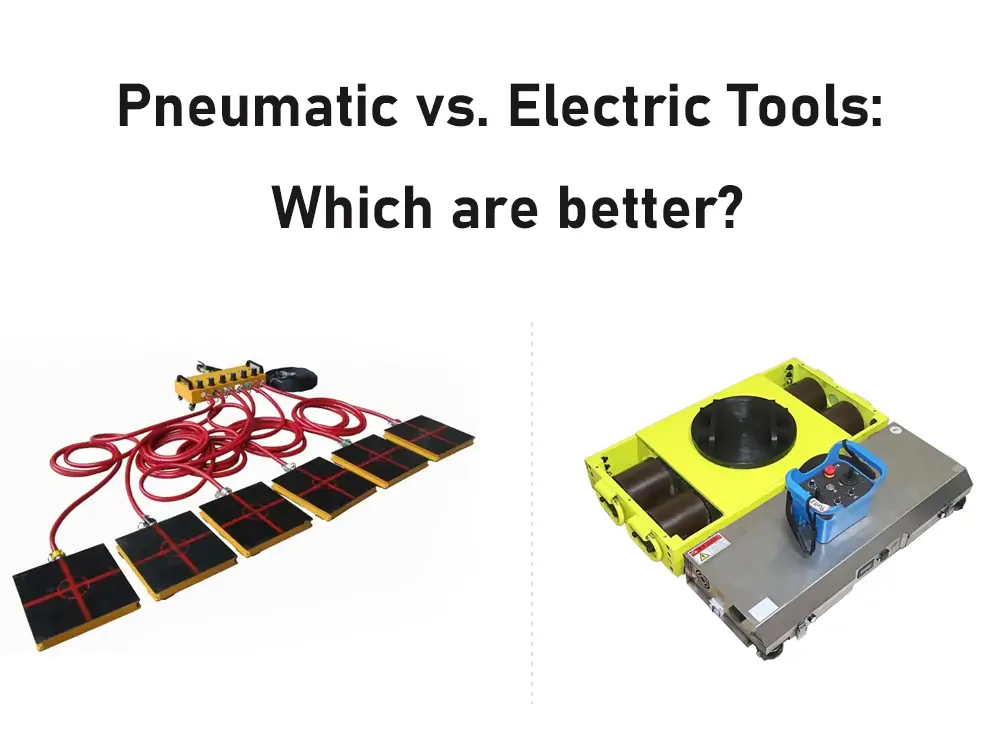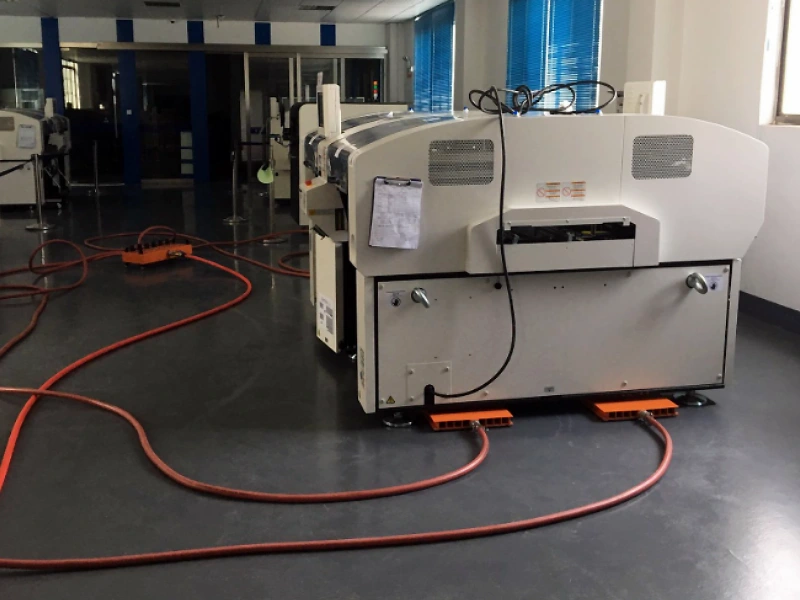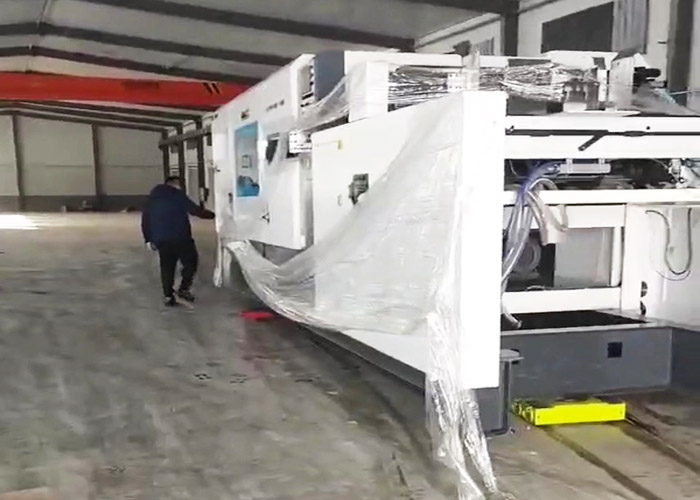
Introduction
Pneumatic tools use compressed air to deliver power, while electrical tools require a cord or battery. Both electric and pneumatic tools have vast applications regarding their features. Pneumatic and electric tools are popular in aerospace and heavy-load movement industries. They are compared to find the best tool for a task. Pneumatic tools are powerful but have low torque. Electric tools need a constant supply of electricity.
Basic Principles
The basic working principle for a pneumatic tool is using compressed air for power delivery. Many heavy industrial products are moved with the help of pneumatic or air tools. These tools use air film between the floor and the platform; the air cushion will provide less friction and torque. Hence, the use of air tools is quite convenient. On the other hand, electrical tools require constant energy to work. Pneumatic tools are more durable as compared to electrical tools. Similarly, it is advantageous to use pneumatic tools as no health hazards are associated with them.
Advantages of Pneumatic Tools in Material Handling

Some of the pivotal advantages of using the air or pneumatic tools are as follows:
· For heavy lifting and handling: High power-to-weight ratio
The greatest advantage of pneumatic tools is their high power-to-weight ratio. This means they are much lighter and can deliver high-power energy. An air caster used in the lifting and handling industries is just a platform that can move 100 tons of equipment in a heavy-duty industry. Similarly, different tasks like drilling, grinding, and nailing can be done by using pneumatic tools.
· Continuous power supply with minimal risk of overheating
Pneumatic tools use compressed air for power. The power supply is constant. Using air in the operation reduces the risk of overheating. This is a concern with electrical tools. Pneumatic tools provide greater safety for the users. These tools are more portable as they don’t require a plug near them to operate
· Durability in harsh environments
Pneumatic tools are built to withstand the harsh environment of an industry. They can resist dust, moisture, and high temperatures and work efficiently. The steady supply of compressed air makes them more durable than electrical tools.
· Precise control of delicate or sensitive movements
Air tools are used in industries where heavy equipment needs to be moved from one place to another. Heavy equipment is moved very precisely using air tools like air casters. Air tools can also move heavy materials in handling industries. They can make sensitive movements very efficiently.
Advantages of Electric Tools in Material Handling

Electric tools have been in business for a very long time. Here are the advantages of using electric tools:
· Easy to handle
Electric tools in industries are easy to handle, which means that anybody can operate them; there is no need for technical knowledge. The operation can start by plugging in the electrical tool, and the work has been done.
· Energy Efficient
Energy efficiency is the main requirement for a tool to be used in an industry. Electrical tools are energy efficient when a constant supply of energy is available for them to operate.
· Portable models
With advances in electrical tools, some now run on batteries. This advancement gave electrical tools high portability and mobility. These devices can be moved to any place with a battery.
· Quieter operation
Electrical tools can be operated in silence, as they are smoother and more constant. On the other hand, pneumatic tools usually produce sound during operation for air compression. Electrical tools are preferred by industries where noise pollution is a concern.
Performance Comparison
The tool’s ability to generate power and torque decides its performance. The electric one is better than the pneumatic one. It is more efficient at generating power and torque. Different pneumatic tools use compressed air to remove dust and rust from car parts. Pneumatic tools are very powerful and far more efficient than electrical tools. It depends on the task. Electrical tools are high-performance. An electric gun can deliver high torque and energy.
Cost considerations
Electrical and pneumatic tools are used significantly in the material handling industries. Pneumatic tools are less expensive if the industry has an air compressor. Pneumatic tools can operate and move heavy materials with great power and efficiency. Businesspeople must know that air compressors and pneumatic tools are very expensive. In the long run, these tools save money. Pneumatic tools are more expensive than electrical tools.
Lifespan and Maintenance
People use pneumatic tools in their industries as they require much maintenance. They have no intricate parts but still need maintenance after a short time. Electrical tools have many parts that work together to perform a task. A single damaged part can affect the whole operation. Electrical tools don’t rely on external air resources, so they don’t require regular maintenance. The lifespan of pneumatic tools is longer than that of electrical tools. If the pneumatic tools are correctly maintained, their lifespan can be enhanced. The life span of a pneumatic tool is around 5-7 years, while for electrical tools, it is about 3-4 years.
Should I choose Pneumatic or Electric Tools?
Heavy material must move from one place to another in the material handling industry. An industry that needs high-power tools must use pneumatic ones. For small, energy-efficient tasks, use electrical tools. They require less maintenance. The choice of the tools depends on the nature of the task. Pneumatic tools have many advantages over electrical tools. Pneumatic tools are high-performing, long-lasting, portable, precise, and powerful. It depends on the industry’s needs and the required power.
Conclusion
Industries using pneumatic and electric tools are familiar with their pros and cons in material handling. Pneumatic tools provide a high power-to-weight ratio, durability, portability, and precision. They also reduce the chance of machinery overheating and do not pose any health hazards.
On the other hand, electric tools are known for their ease of use, energy efficiency, and quieter operation. Pneumatic tools are costly and have noise pollution concerns due to the trembling sound of the air compressor. With the years of advancement, both tools have revolutionized the material handling industries with enhanced energy efficiency and smart technology integration. Please contact us for the safest and most efficient solution for handling heavy objects.
